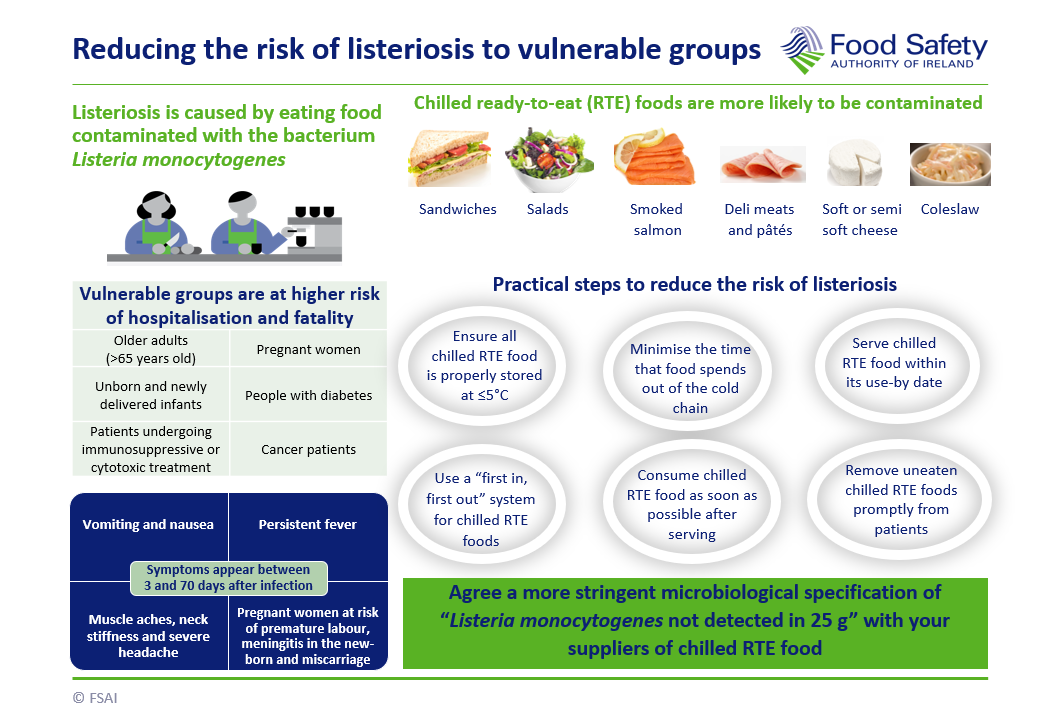For more detailed information on consumer issues, please go to safefood.net. Safefood is the all-island body, whose role is to promote awareness and knowledge of food safety and nutrition on the island of Ireland.
Any of us can get sick if we eat unsafe food, but some of us are more at risk than others. The Food Safety Authority of Ireland has prepared a leaflet that tells you about safe food choices that can reduce your risk of getting food poisoning. The information here is especially important if you, or someone you are caring for, is at special risk of infection.
Reducing the risk of listeriosis to vulnerable groups
Listeriosis is caused by eating food contaminated with the bacterium Listeria monocytogenes.
Vulnerable groups are at higher risk of hospitalisation and fatality
- Older adults (>65 years of age)
- Unborn and newly delivered infants
- Patients undergoing immunosuppressive or cytotoxic treatment
- Pregnant women
- People with diabetes
- Cancer patients
Chilled ready-to-eat (RTE) foods are more likely to be contaminated
- sandwiches
- salads
- smoked salmon
- deli meats and pâtés
- soft or semi-soft cheese
- coleslaw
Practical steps to reduce the risk of listeriosis
- ensure all RTE foods is properly stored at ≤5 °C
- minimise the time that food spends out of the cold chain
- serve chilled RTE food within its use-by date
- use a "first-in, first-out" system for chilled RTE foods
- consume chilled RTE food as soon as possible after serving
- remove uneaten RTE foods promptly from patients
- agree a more stringent microbiological specification of "Listeria monocytogenes not detected in 25 g" with your suppliers of chilled RTE food.
Symptoms appear between 3 and 70 days after infection
- vomiting and nausea
- muscle aches, neck stiffness, and severe headache
- persistent fever
- pregnant women at risk of premature labour, meningitis in the newborn and miscarriage

See the PDF version of this infographic about reducing listeriosis to vulnerable groups
